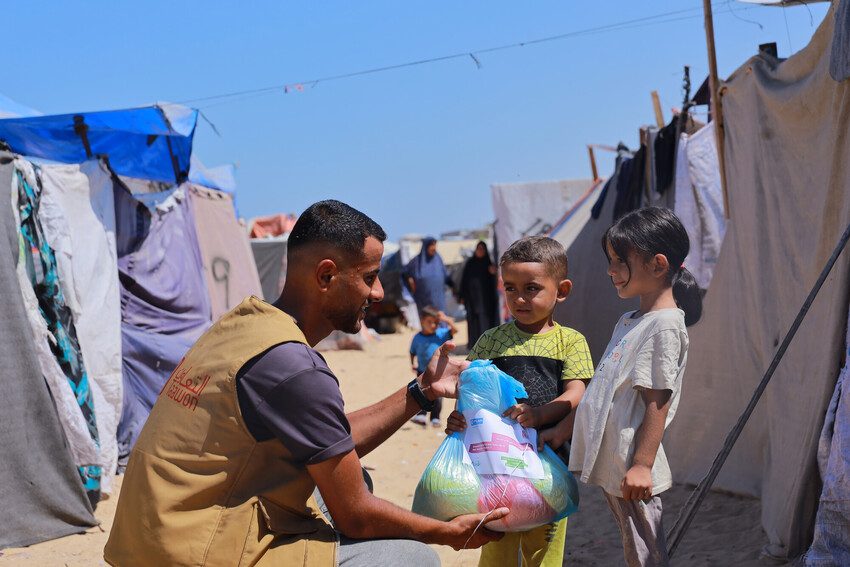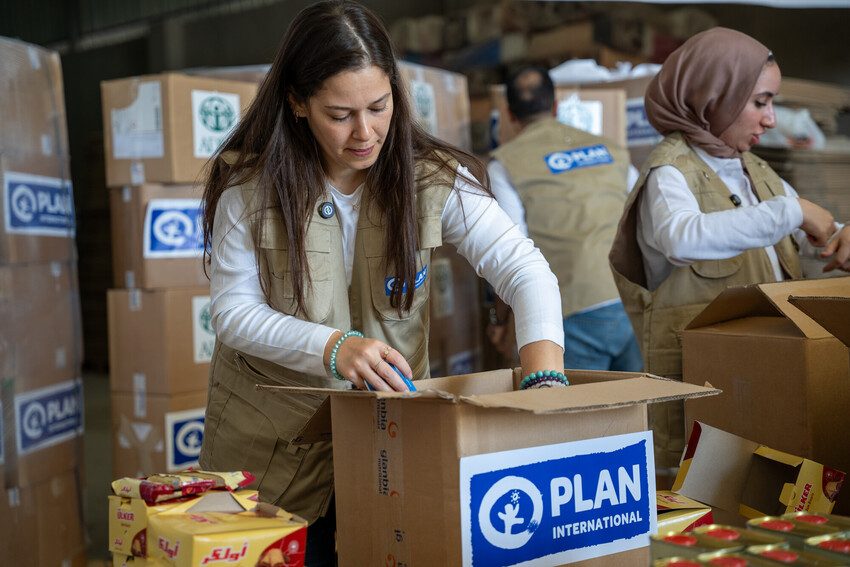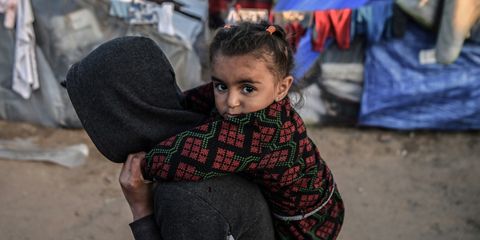Frequently asked questions about the humanitarian crisis in Gaza.
This explainer describes the situation in Gaza, the critical need for humanitarian access and aid, and Plan International’s response.

What is the humanitarian situation in Gaza?
Gaza has been described as, “the most dangerous place in the world to be a child,” by UNICEF.
More than 68,000 people have been killed in Gaza with 170,000 reported injured. The true death toll is feared to be much higher as many bodies have not been recovered.
Some 70% of fatalities in Gaza are women and children. Although the number of children who have been killed is not reported frequently, the latest estimate from the Palestinian Ministry of Health surpasses 20,000.
90% of Gaza’s population (1.9 million people) are internally displaced, with decimated livelihoods, crippled food systems, 70% of crop fields destroyed, severely restricted humanitarian operations and the collapse of health services and water, sanitation and hygiene systems.
What kind of aid is needed in Gaza?
With 1.9 million people displaced in Gaza uprooted from their homes, secure shelter and essential services are in desperately short supply. Humanitarian aid must be inclusive, addressing the needs of people with disabilities and ensuring no one is left behind.
As Gaza braces for the winter, the precarious conditions threaten the well-being of its most vulnerable—women and children, who disproportionately suffer in cold environments due to inadequate shelter. The cold intensifies the suffering of displaced families, especially children and the elderly, who are most vulnerable to the harsh conditions.
Plan International urgently calls for international mobilisation to provide support, including durable shelter, heating solutions, essential winter supplies, warm clothing and robust shelters, especially as the majority of houses in Gaza have been destroyed or damaged.
1.84 million people across the Gaza Strip are experiencing high levels of acute food insecurity classified in IPC Phase 3 (crisis) or above. Of these, 133,000 people are facing catastrophic food insecurity (IPC Phase 5) and 664,000 are in IPC Phase 4 (emergency).
Immediate global intervention is required to prevent a catastrophic famine. It’s not too late to take action to prevent more children from dying.
What is the situation like for children in Gaza?
More children have been killed in Gaza than in all other conflicts combined in the last 4 years. Those who survive are constantly being exposed to highly traumatic events which will leave mental and physical scars for years to come.
All children have the right to a life free from violence and fear and it is the collective responsibility of the global community to protect that right.
There are 658,000 students with no access to formal education and nearly nine in 10 (87%) of schools are damaged or destroyed. Immediate action is needed to restore education facilities.
Plan International demands immediate action to ensure resuming safe and inclusive education for all children. We condemn attacks against education, a grave violation of children’s rights in conflict.
Growing up in a warzone, children and young people in Gaza have witnessed repeated devastation that has robbed them of the stability needed to foster their potential. The current situation calls for more than traditional aid; it demands a focused, international effort to rebuild not just infrastructure, but the very hopes and futures of these young individuals.
We cannot afford to lose another generation. It is imperative that we act decisively to restore the dreams and futures of Gaza’s youth, providing them with the tools and opportunities necessary to forge a brighter, peaceful future. Their resilience is our responsibility.
How is Plan International responding in Gaza?
Since the ceasefire, Plan International and partners have successfully dispatched over 50 trucks of life-saving humanitarian aid to Gaza through the Egyptian humanitarian corridor. These trucks have now crossed the border and reached families inside Gaza.
We are hopeful that the remainder of our convoy will also enter Gaza over the coming days. Together, these trucks carry enough supplies to reach more than 250,000 people, with food, dignity kits and hygiene kits.

While this achievement brings hope, the needs facing children in Gaza remain immense. We continue to appeal for funds so that we can deliver more emergency aid, and to call for increased and sustained humanitarian access.
With parts of Gaza facing famine and record rates of malnutrition, nutrition supplies are desperately needed. As part of our response, we are preparing to include nutrition supplies that will treat and prevent malnutrition among children and pregnant or lactating women, many of whom have gone weeks without adequate food.
We are urgently appealing for a total of $5 million (USD), which will enable us to reach 1 million people in Gaza by the end of December, through the humanitarian corridor from Egypt, utilising the confirmed access windows for November and December.
This funding will allow us to scale up our deliveries of food, nutrition, and education materials – ensuring that children, women, and families in Gaza receive life-saving support.
Download the Humanitarian Access Snapshot
Humanitarian Access Snapshot #11 – 19 Jan -15 April 2025
19.87 mb
Humanitarian Access Snapshot #10- West Bank Jan – Feb 2025
22.74 mb
Gaza Humanitarian Access Snapshot #9 – Jan 2025
14.91 mb
Gaza Humanitarian Access Snapshot #8 – Nov 13 – Dec 10
2.55 mb


